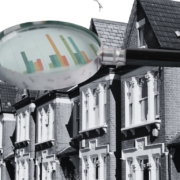The Bank of England looks set to unwrap another unwelcome present of an interest rate rise just ten days before Christmas, inflicting fresh cost-of-living pain on borrowers.
Inflation is still running at super-hot levels and the latest temperature check will be taken on Wednesday the day before policymakers announce their decision.
It expected to show that the price spiral is still in double digits which means the central bank will have to be more Scrooge-like and make borrowing even more expensive to dampen down demand.
The base rate is set to rise by 0.5% to 3.5%.
The last time it was above 3% was 14 years ago, as the effects of the financial crisis were taking hold and the Bank was in the process of rapidly reducing rates to help keep the costs of borrowing down and help companies and consumers.
This time, even though the UK is heading into recession, the Bank is still set to ratchet rates up further because inflation is seen as a greater threat to the economy.
The base rate is set to rise to an expected peak of between 4.5% to 4.75% by the middle of next year.
Policymakers are likely to continue to be split on the how far rates should rise this month, as more data filters through showing that the sharp tightening drive is already taking effect on the labour market and consumer sentiment.
Although the UK is still in the pincer grip of strikes across a raft of industries, there are signs pay demands are starting to cool off.
It’s one freeze frame in the snapshot from the trade body the Recruitment and Employment Confederation, which also showed that and pace of hiring fell back for the second month in a row.
Consumers are also becoming a lot more cautious as household bills mount, reducing the volume of sales in the retail sector according to the British Retail Consortium.
Other data from the BRC and Sensormatic IQ has shown that total retail footfall in the UK fell by 13% in November compared with pre-pandemic levels.
The Bank of England may have changed its ultra-bleak forecasts about the depth and length of the recession, given its last outlook was published before the Trussenomics tax cuts were reversed and financial stability had largely returned.
However, the UK is still entering a long and difficult period of contraction, as inflation’s stubborn resistance is slowly broken down by rate rises, which will in turn bash consumer and company resilience.
























Comments